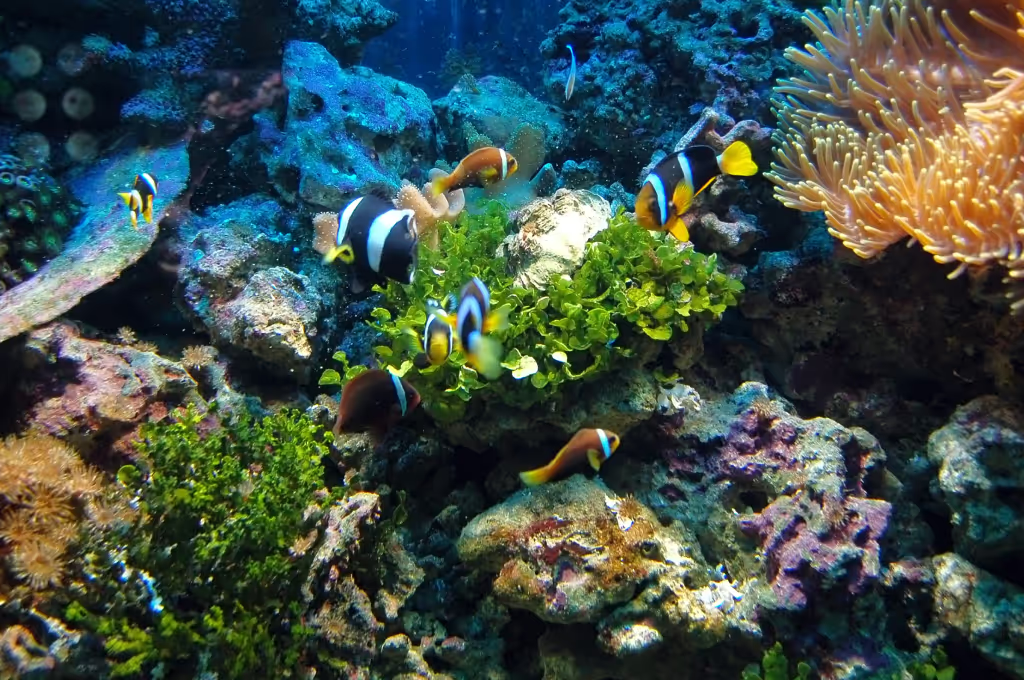
Product walkthrough, trial, POCs, enterprise offering, support and more. Speak with one of our specialists.


Product walkthrough, trial, POCs, enterprise offering, support and more. Speak with one of our specialists.

Sustainable living
Biodiversity: The Foundation of Healthy and Sustainable Ecosystems
Biodiversity is one of the most crucial yet often overlooked elements in sustaining life on Earth. While economic growth and technological advancements dominate headlines, the silent contribution of diverse organisms is what keeps our ecosystems functioning. From the food we eat to the air we breathe, biodiversity directly affects the quality and continuity of human life. Yet, global biodiversity is declining at an alarming rate. As reported by the Intergovernmental Science-Policy Platform on Biodiversity and Ecosystem Services (IPBES), nearly one million species of animals and plants are currently at risk of extinction[Ref]. This article aims to explore what biodiversity truly means and why protecting it is vital for ecosystem stability and resilience.
What is Biodiversity?
The term, originally derived from 'biological diversity' encompasses the full range of life forms on our planet, divided into three key levels:
Biodiversity is not just about numbers but also about the relationships and functions each component serves within an ecological web. Each element, from soil microbes to apex predators, contributes in ways that keep natural systems operating smoothly. These systems, in turn, provide services that are vital for human life.
The concept of biodiversity is holistic, because it captures the interconnectedness of all life forms. When a part of this web is disturbed, whether through the extinction of a species or the degradation of a habitat, the entire system can suffer consequences.
Why Is Biodiversity Important?

Biodiversity is important not only for its aesthetic charm or academic interest, but for its vital role in sustaining ecosystems. It forms the backbone of our ecological systems and directly supports human well-being through a range of ecosystem services:
In essence, biodiversity enables ecosystems to function effectively and deliver services that are critical to life. It is the foundation on which entire economies are built, particularly in agriculture, forestry, fisheries, and tourism.
Biodiversity and Ecosystem Protection
Biodiverse ecosystems are inherently more resilient, with each species contributing to the overall stability and ecological performance, regardless of its size or prominence. When biodiversity is rich, ecosystems can better withstand disturbances like natural disasters, diseases, or climate fluctuations.

Take tropical rainforests, for example. They're among the most biodiverse ecosystems on Earth and play a key role in absorbing massive amounts of carbon dioxide, helping to slow the pace of climate change. Coral reefs, on the other hand, act as natural breakwaters that shield coastlines from erosion while supporting marine biodiversity vital to fisheries and tourism. Beneath our feet, soil microbes quietly do their part too—breaking down organic matter, cycling nutrients, and keeping plants healthy.
Diverse ecosystems also avoid redundancy. If one species is lost, others may fulfill similar roles, reducing the risk of system collapse. This redundancy makes biodiverse ecosystems more adaptable to change. It is a form of insurance that nature has built over millions of years.
Loss of even a single species can set off a chain reaction, disrupting food chains and reducing ecosystem efficiency. The concept of "keystone species" highlights this—these are species whose impact on their ecosystem is disproportionately large relative to their abundance[Ref]. Removing a keystone species, like sea otters in kelp forests, can unravel entire ecosystems. Their absence can lead to unchecked sea urchin populations, which in turn destroy kelp beds and the marine life that depends on them.
Beyond keystone species, biodiversity ensures the availability of genetic resources that can be vital for future innovation and adaptation. As environmental conditions evolve due to climate change or disease outbreaks, genetic diversity within species allows them to evolve and survive.
Threats to Biodiversity
Despite its importance, biodiversity faces numerous threats, largely driven by human activities:
According to WWF's Living Planet Report 2022, wildlife populations have declined by an average of 69% since 1970[Ref]—a blunt reminder of our collective impact. Without serious efforts to reverse this trend, we risk destabilizing the very systems that support life on Earth.
How Can We Protect Biodiversity?
Preserving biodiversity requires coordinated action across governments, organizations, and individuals. Here are several ways biodiversity can be protected:
Conclusion
Biodiversity is not a luxury, but a necessity for the health of the planet and the well-being of future generations. It supports every breath we take, every meal we eat, and every drop of clean water we drink. Protecting biodiversity is about acknowledging the interconnectedness of life and our responsibility within it.
The preservation of biodiversity requires more than just science or policy. It demands empathy, education, and collective will. Each action, no matter how small, contributes to the broader effort. Whether it's planting native trees, reducing waste, or supporting wildlife-friendly businesses, everyone has a role to play.
As stewards of the Earth, our actions today will determine the richness of life tomorrow. It’s time we stop viewing biodiversity as something "out there" and start seeing it as the very fabric of our existence. Let this be our call to nurture, protect, and restore the natural systems that sustain us all.






















Jejakin’s green programs combine high-tech monitoring, biodiversity restoration, and community-led initiatives to deliver powerful, sustainable change across ecosystems.








